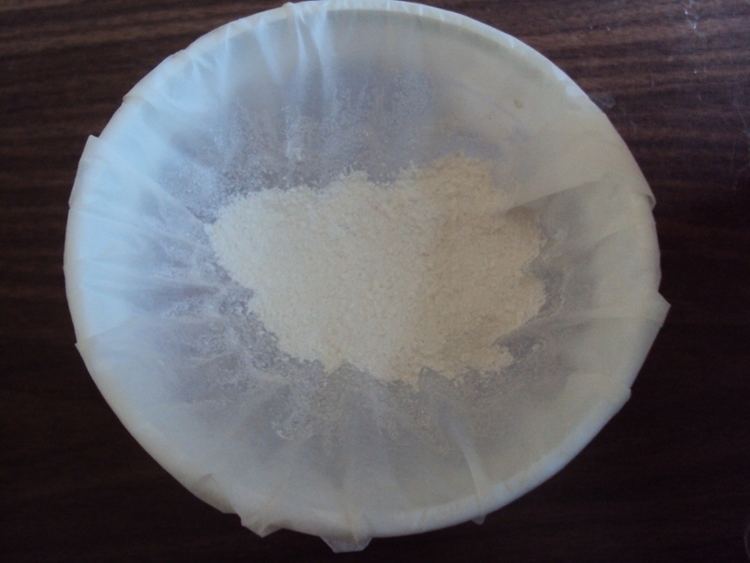Formula AgN3 Density 4.42 g/cm³ Appearance colorless solid | Molar mass 149.888 g/mol Melting point 250 °C | |
 | ||
Preparation of hydrazoic acid azoimid and silver azide
Silver azide is the chemical compound with the formula AgN3. This colorless solid is a well-known explosive.
Contents
Structure and chemistry
Silver azide can be prepared by treating an aqueous solution of silver nitrate with sodium azide. The silver azide precipitates as a white solid, leaving sodium nitrate in solution.
AgNO3 (aq) + NaN
3 (aq) → AgN
3 (s) + NaNO
3 (aq)
X-ray crystallography shows that AgN3 is a coordination polymer with square planar Ag+ coordinated by four azide ligands. Correspondingly, each end of each azide ligand is connected to a pair of Ag+ centers. The structure consists of two-dimensional AgN3 layers stacked one on top of the other, with weaker Ag–N bonds between layers. The coordination of Ag+ can alternatively be described as highly distorted 4 + 2 octahedral, the two more distant nitrogen atoms being part of the layers above and below.
In its most characteristic reaction, the solid decomposes explosively, releasing nitrogen gas:
2 AgN3 (s) → 3 N
2 (g) + 2 Ag (s)
The first step in this decomposition is the production of free electrons and azide radicals; thus the reaction rate is increased by the addition of semiconducting oxides. Pure silver azide explodes at 340 °C, but the presence of impurities lowers this down to 270 °C. This reaction has a lower activation energy and initial delay than the corresponding decomposition of lead azide.
Safety
AgN3, like most heavy metal azides, is a dangerous primary explosive. Decomposition can be triggered by exposure to ultraviolet light or by impact. Ceric ammonium nitrate is used as an oxidising agent to destroy AgN
3 in spills.
